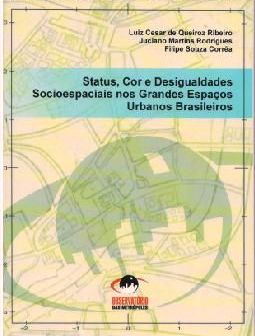)
isbn |
Status, cor e desigualdades socioespaciais nos grandes espaços urbanos brasileiros
Este relatório tem como objetivo apresentar um estudo que procura avaliar a relação entre status social e cor na explicação da segregação residencial e nas desigualdades sociais nos grandes espaços urbanos brasileiros.
O objetivo geral é responder à seguinte questão: em que medida as desigualdades sociais verificadas entre os segmentos brancos, pretos e pardos no espaço urbano decorrem das diferenças das condições sociais entre os territórios definidos pelas áreas de ponderação ou das desigualdades “raciais” já descritas por outros pesquisadores? De maneira mais precisa, o interesse é saber se uma pessoa de cor preta ou parda desfruta da condição social em termos de oportunidades e de acesso a certos elementos de bem-estar urbano e de oportunidades, independente de estar vivendo em um espaço de maior ou menor status social, ou se, ao contrário, o status social do espaço residencial é o filtro pelo qual as oportunidades e o bem-estar social urbano são distribuídos desigualmente entre os grupos de cor.
Synopsis
This report presents the findings of research into the complex relationship between social status and color, and their role in explaining residential segregation and social inequalities in major Brazilian cities.
The overall goal is to answer the following question: are social inequalities between white, black and brown populations primarily the result of differences in social conditions in different urban territories, or, on the other hand, of “racial inequalities”? More precisely, the question is whether a black or brown person enjoys the same access to opportunities and various elements of urban well-being, independent of the social status of their neighbourhood and whether a hierarchy of spaces is the key mechanism through which opportunities and welfare are distributed among groups of color.
Link para o livro














